Ranunculus Revisited
It’s been a great year for ranunculus here in Victoria, even though the season was unfortunately brought to a premature halt because of an early heat wave. Ranunculus, like me, don’t like it hot, and even shade cloth didn’t help all that much. But while it lasted I got a lot of fabulous flowers and had a good opportunity to assess all the varieties I had selected to trial.
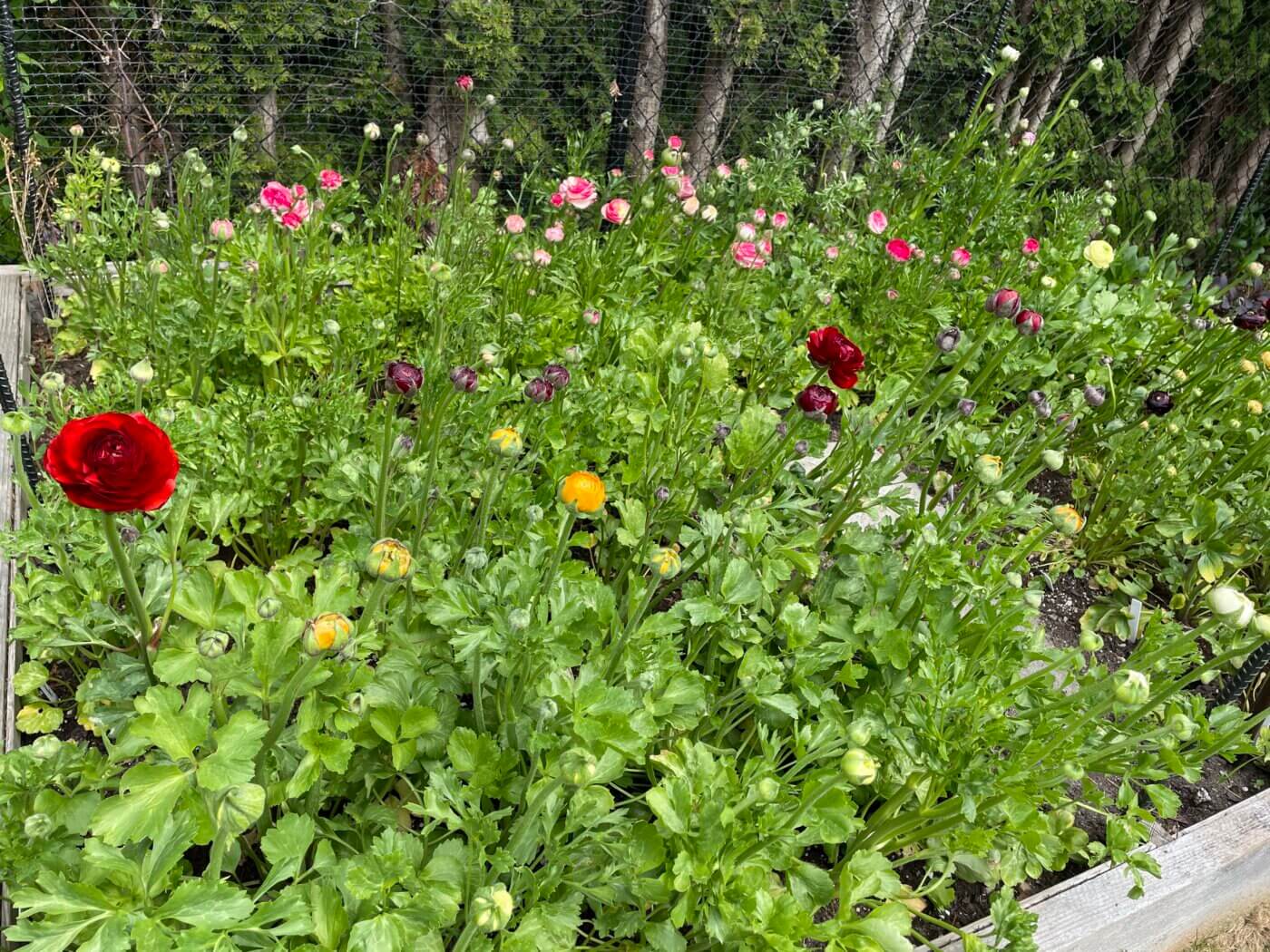
Varieties of ranunculus
I bought tubers from a wide variety of flower farmers this year. Some I really splurged on, getting the very expensive cloned ranunculus which cost an arm and a leg for just three tubers. I’m not sure I’ll be splurging again. They were indeed lovely flowers, but I wasn’t convinced they were worth what I had to pay. (And I won’t be mentioning the price here because my husband proofreads my articles.) I tried ‘Mambo’, ‘Grand Pastel’, and ‘Nerone’, and yes, the first flowers were absolutely massive, but after the first flush the flowers got smaller and smaller and they stopped flowering before the other ranunculus.
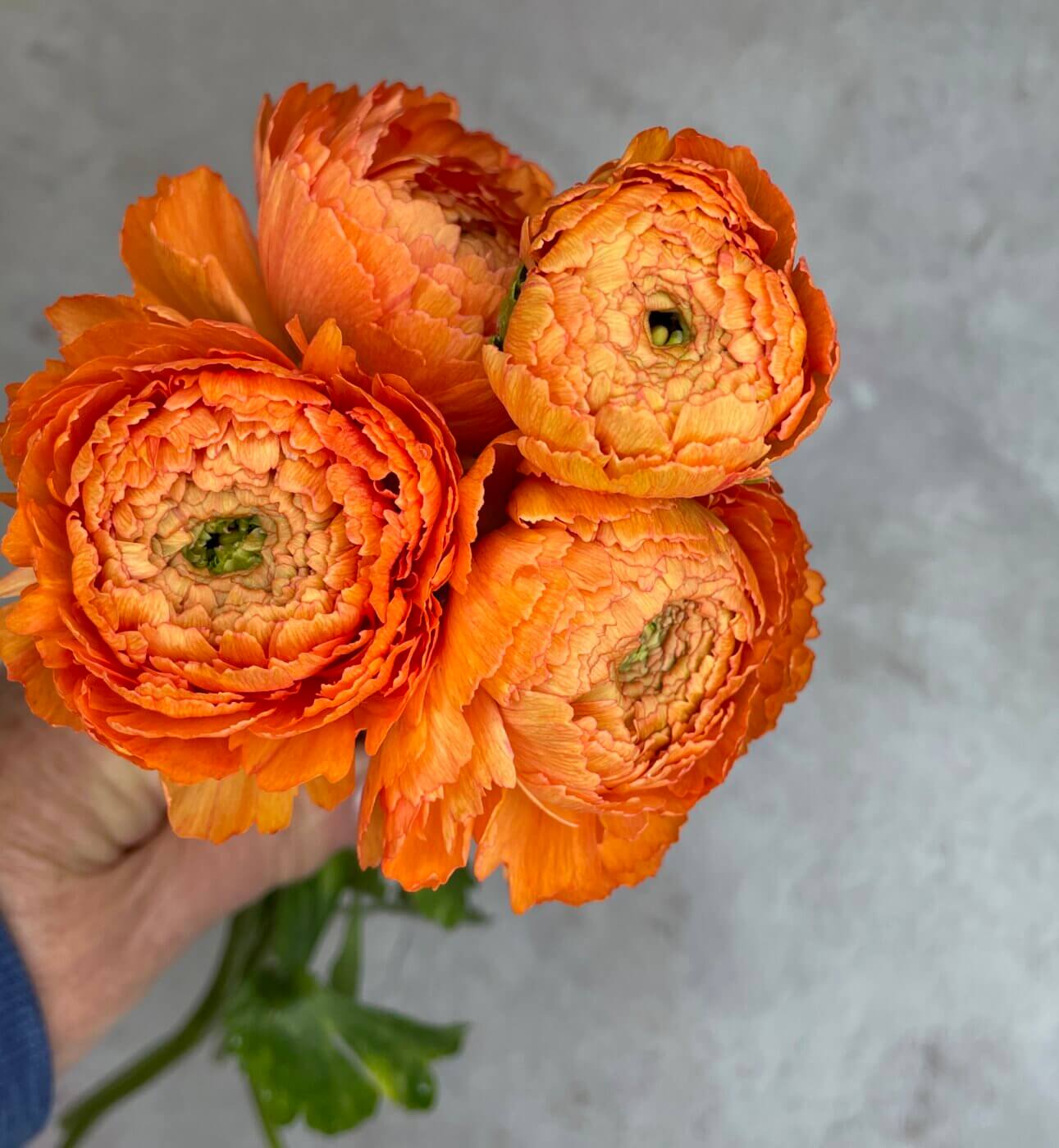
My favourites mainly came from the Elegance or Amandine lines of ranunculus, and to be honest I really couldn’t see much difference between the two, apart from one supposedly being Italian and the other French, a difference I imagine is of interest to no one except the Italians and the French. I particularly loved ‘Crema’, a pale yellow fading to creamy white, and I just went outside to check and yes, as I thought, ‘Crema’ is still giving me a few small flowers.
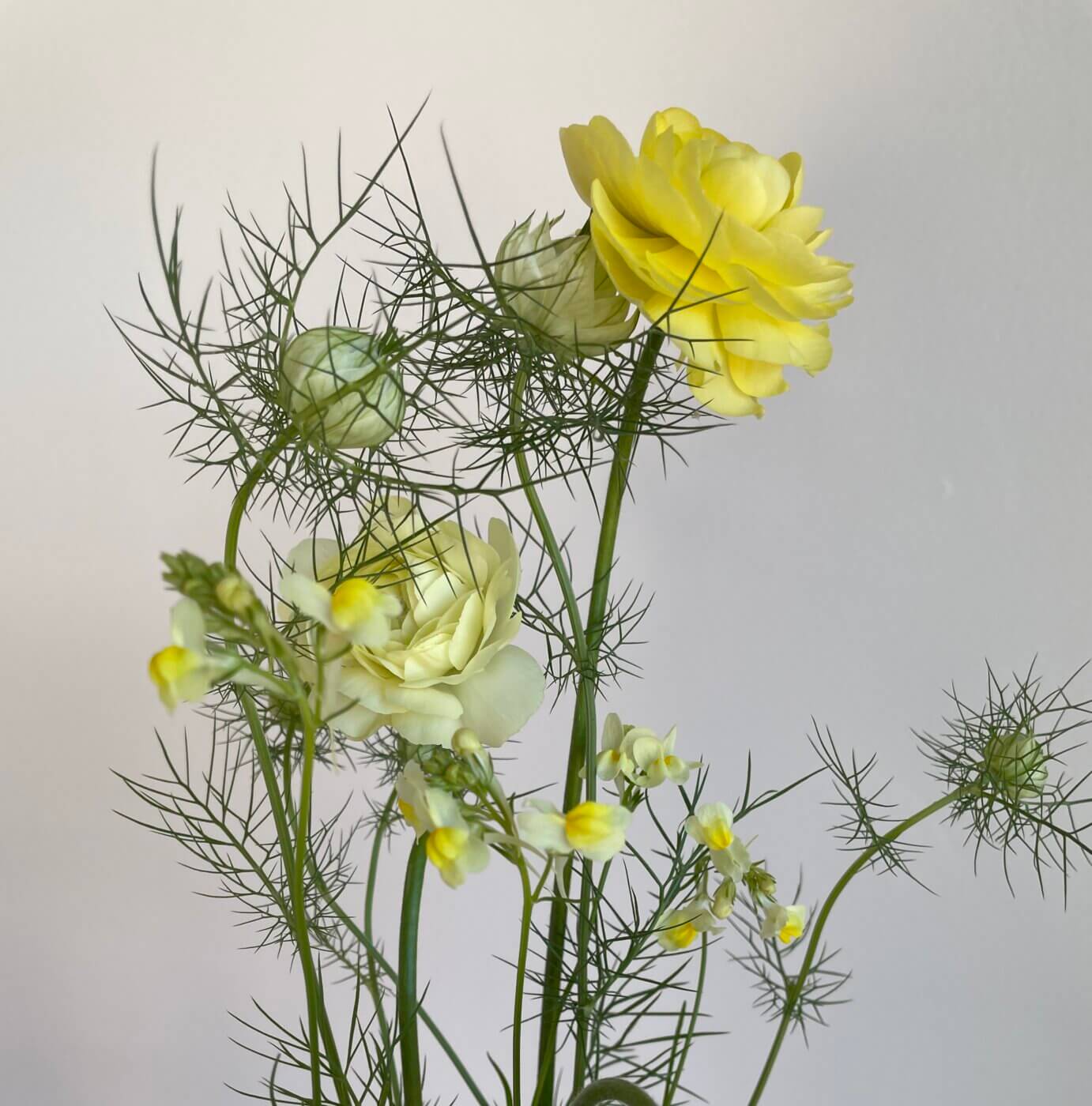
Other favourites this year include ‘Salmone’ (apricot-pinks), ‘Cioccolato’ (rusty reds) ‘Chamallow’ (pretty shades of blush, cream, and soft pink), ‘Clementine’ (super orange) and ”Porcelaine’ (pale pink with deeper edge). These are all quite superior to the ordinary Ranunculus asiaticus you buy that are just labelled ‘pink’ or ‘white’ or whatever, and far superior to the garden centre varieties which are just bedding plants, not for cut flowers. These have longer stems, fuller flowers, and more heat tolerance, but they are not as hard on the pocket as the Clonis.
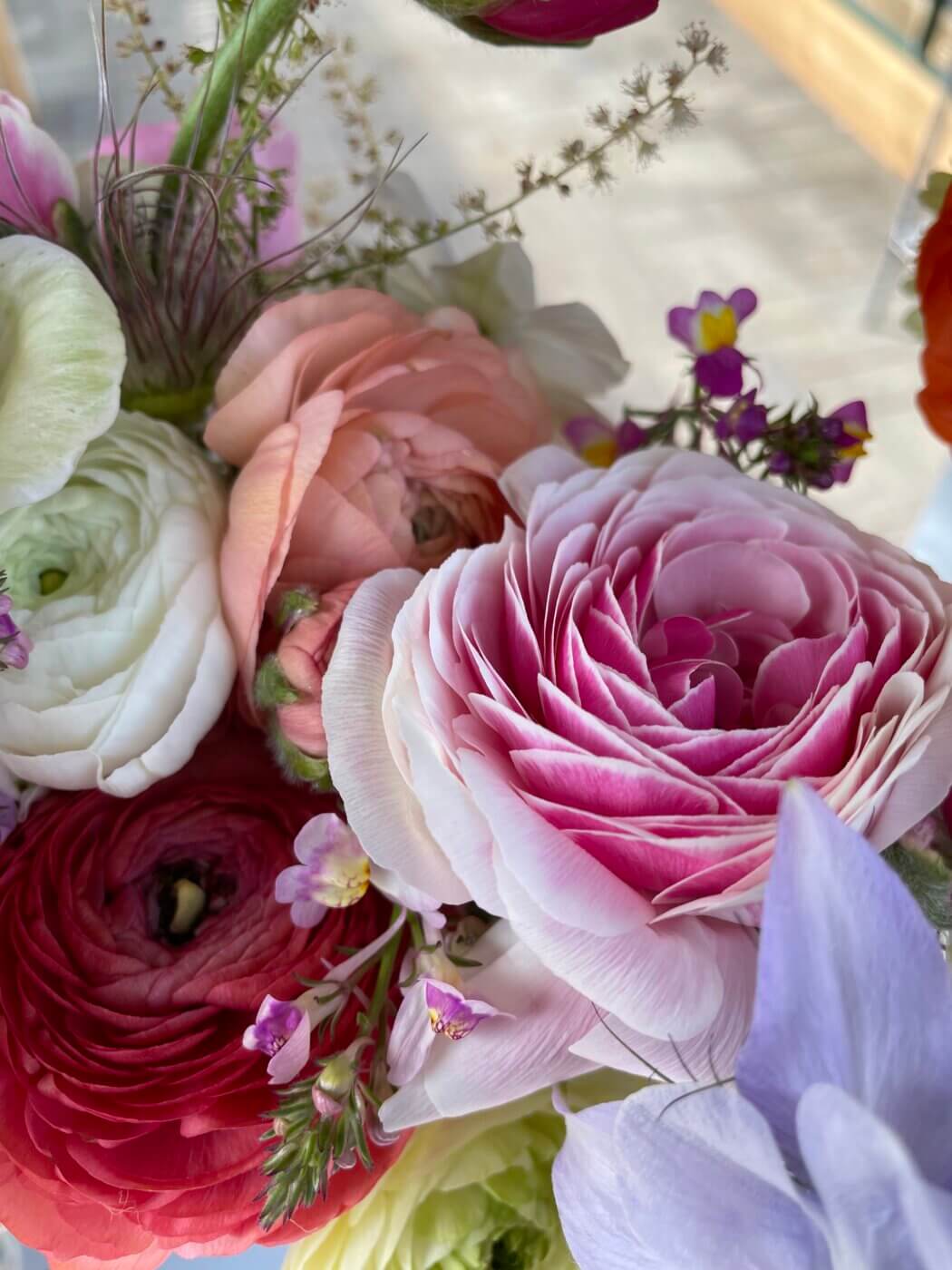
Butterfly ranunculus
I’ve written about the Japanese bred Butterfly Ranunculus before, and I’m still as enthusiastic about them as ever. All named after characters from Greek myth, they produce many stems per plant, and form sprays of flowers, up to ten or more buds per spray. As a result, they appear much lighter and airier than traditional ranunculus. They are a great addition to mixed bouquets, and if you cut them when the first flower comes out, buds will continue to open and the vase life can be a good couple of weeks.

This year I had the opportunity to try a few new to me varieties. None, I will have to say, outshone my favourite ‘Ariadne’, definitely queen of the butterflies, but some came close. ‘Litai’ is a delicious pale yellow with a lovely pearly sheen and ‘Helios’ is just a touch darker with slightly shorter stems than the other butterflies, but it’s a very elegant flower. (Strangely, I used to dislike yellow flowers, but nowadays the pale yellows may well be my favourites.)
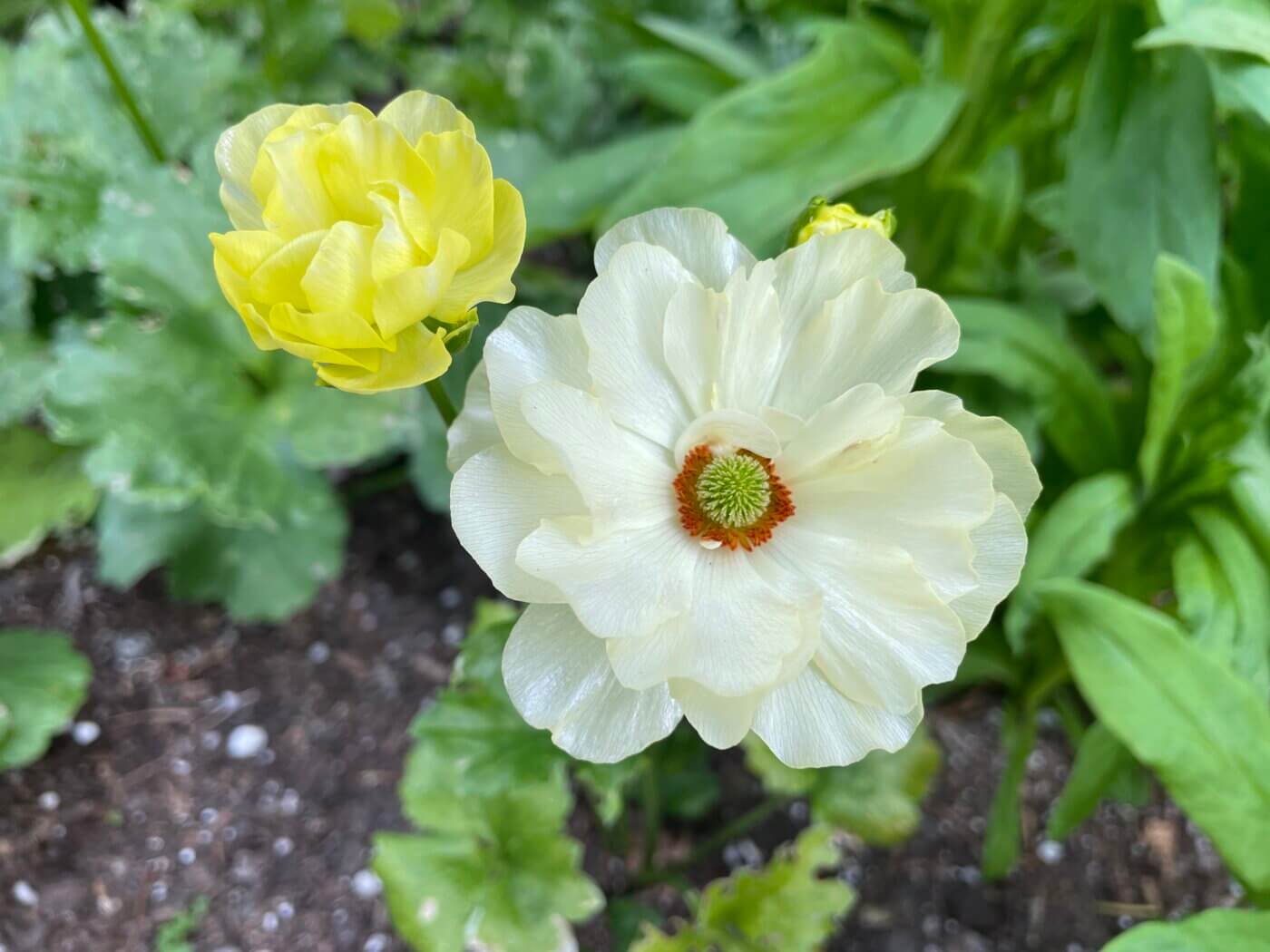
‘Isis’ is a pretty pink, but ‘Hera’ is even lovelier, a deeper pink and a very full bloom, more like little rosebuds than the others. Unfortunately, I couldn’t make the particular shade of ‘Hera’ look good in a photograph without fiddling with filters, which is something I don’t do.
The butterflies I felt a touch ambivalent about were both in the red and orange shades. How a flower fades, I always think, is as important as how it looks when it first opens up in all its glory. ‘Hades’ emerges a strong dark red, but quickly turns into a rather unpleasant muddy red brown. A flower named after the god of the underworld should surely remain a bit more fiery. So a no thank you from me to ‘Hades’.
Minoan’ is one I’m not sure about. It’s a very in-your-face orange, deeper in the centre; it also fades a little but has really good stem length and lots of buds. What saved ‘Minoan’ for me was putting it with some equally brash tulips, rather a violent colour combination but one that I thought still worked.
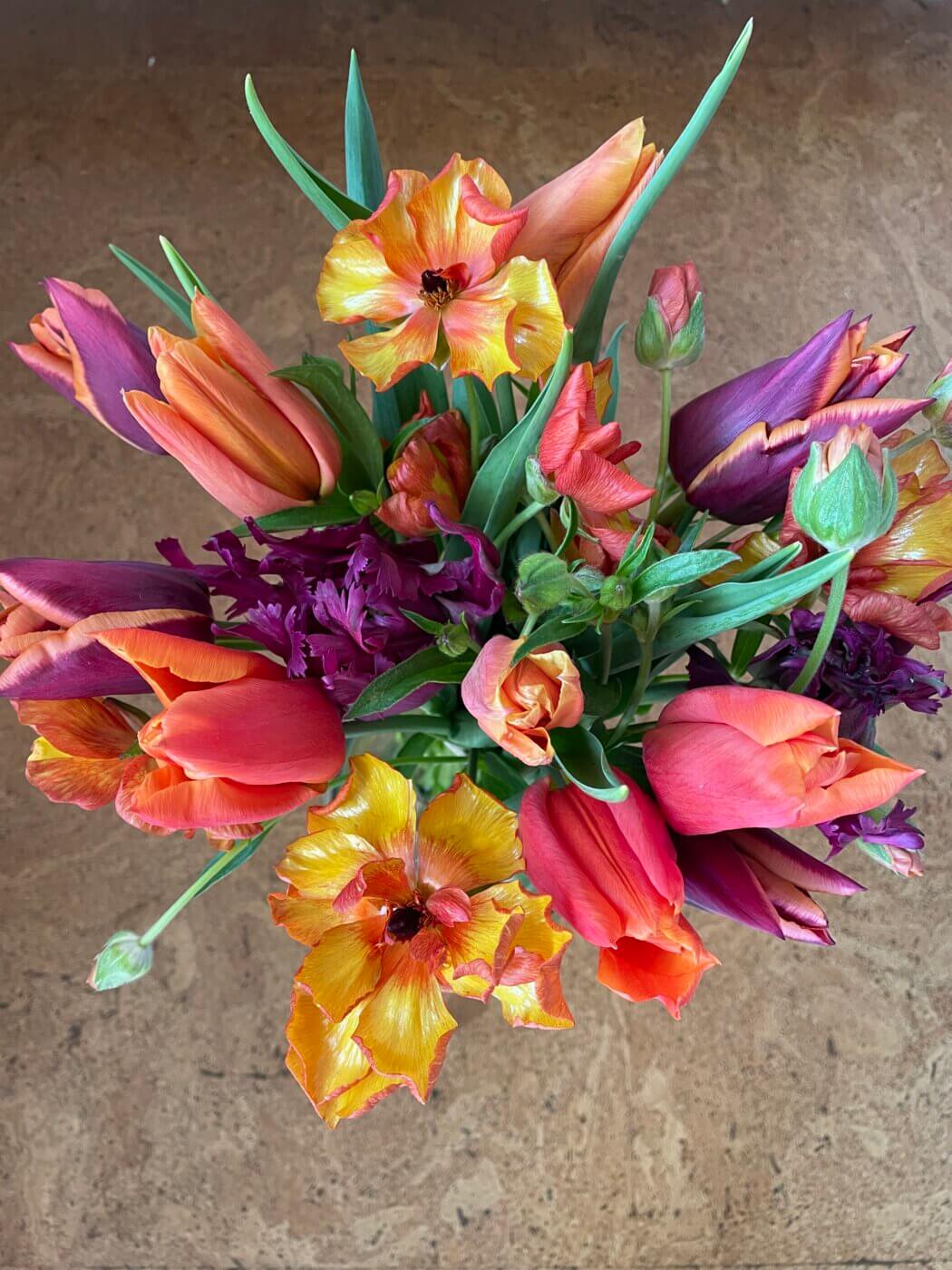
As I’ve said before, for those of us in Canada the problem is getting our hands on these Butterfly Ranunculus. Last year Antonio Valente Flowers offered a few, and fingers crossed he will again this year. If you are in the USA, there’s lots of options, but most of all I recommend Fleur Farm, which has a fantastic selection of all kinds of ranunculus, including some beautiful clones. And in the UK, Sarah Raven usually offers a few, including the delightful ‘Ariadne’.
Growing ranunculus
I followed the general instructions I gave in my previous post for growing ranunculus, and there is just one thing I would add to that. There aren’t many gardeners who can grow ranunculus without losing some of the tubers to rot, so expect a few losses and don’t think you’ve done something wrong when it happens. I’ve stopped pre-sprouting the tubers before planting because this, for me, was the moment when I lost the most, and I don’t think it is a necessary step for the home gardener.
In October, I soaked the ranunculus tubers for a few hours, then planted them in small (3 1/2 inch) pots and kept them in a frost free greenhouse. They began to sprout quite quickly and grew slowly and stockily, kept slightly on the drier side to prevent rot. In early January I planted them out in a raised bed and covered them with a low plastic tunnel. Once the risk of very low temperatures had passed, in mid February, I removed the tunnel. I started getting flowers just before the start of May. I had planted one row direct in the raised bed rather than in the greenhouse, but these didn’t do as well and flowered a bit later. Ranunculus are probably fine down to about minus 5, but I wouldn’t risk anything more. In our climate, the tunnel was as much about keeping off the winter rains as it was protecting them from frost and snow.
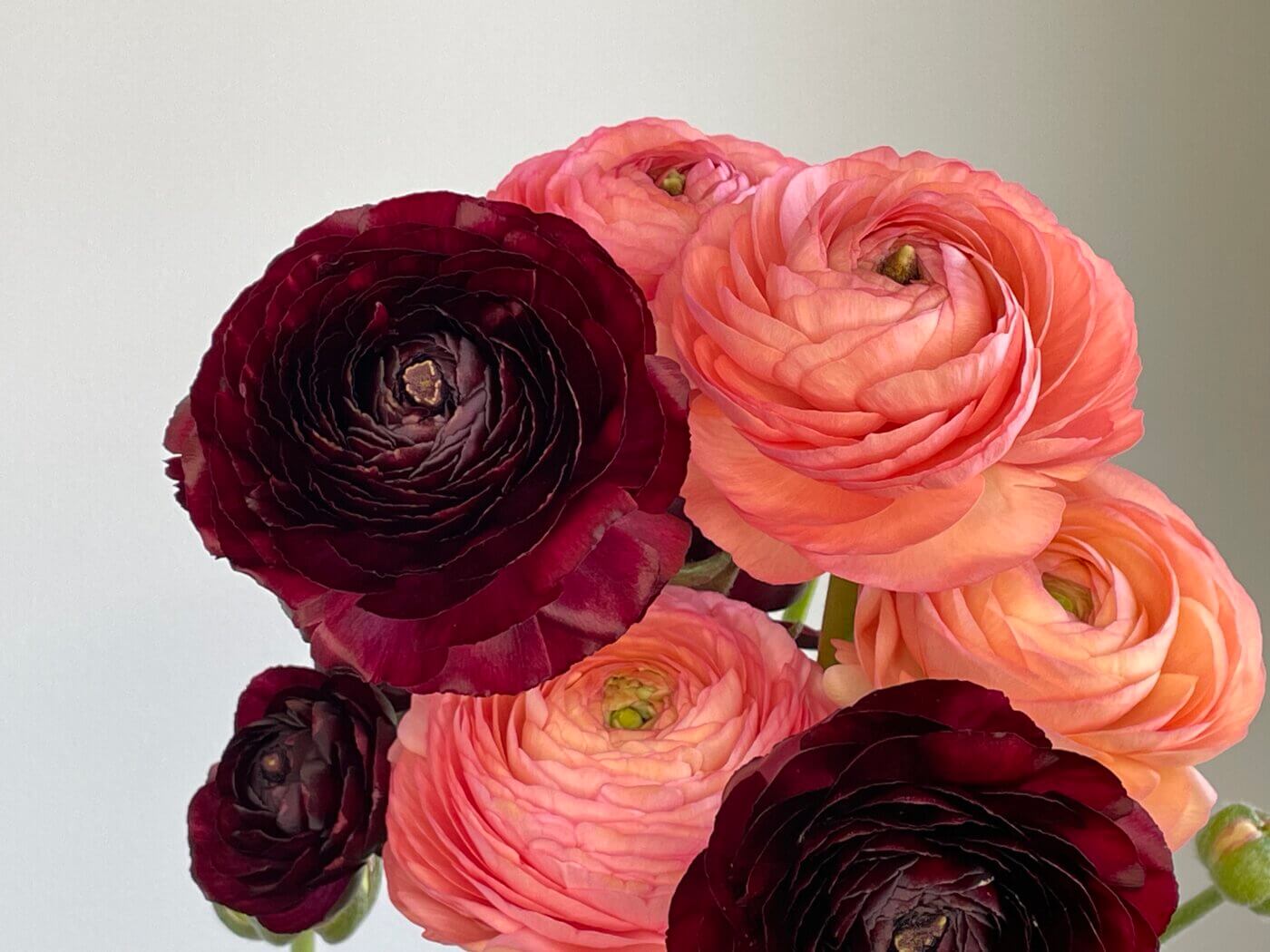
Harvesting ranunculus
A hard lesson I learned this year: when you pick your ranunculus, cut at the base of the plant. It may seem like a waste, with all those buds still to come out, but you will get a longer better stem and, more importantly, you’ll stimulate more stems to grow. Place in cool water after harvest, but otherwise they need no special conditioning. If you are putting together a bunch that is just ranunculus, it is sometimes said you should keep them in just a couple of inches of water as they are rather prone to stem rot. Since I used them mainly in mixed bunches, I didn’t do that myself and didn’t have any problems with stem rot.
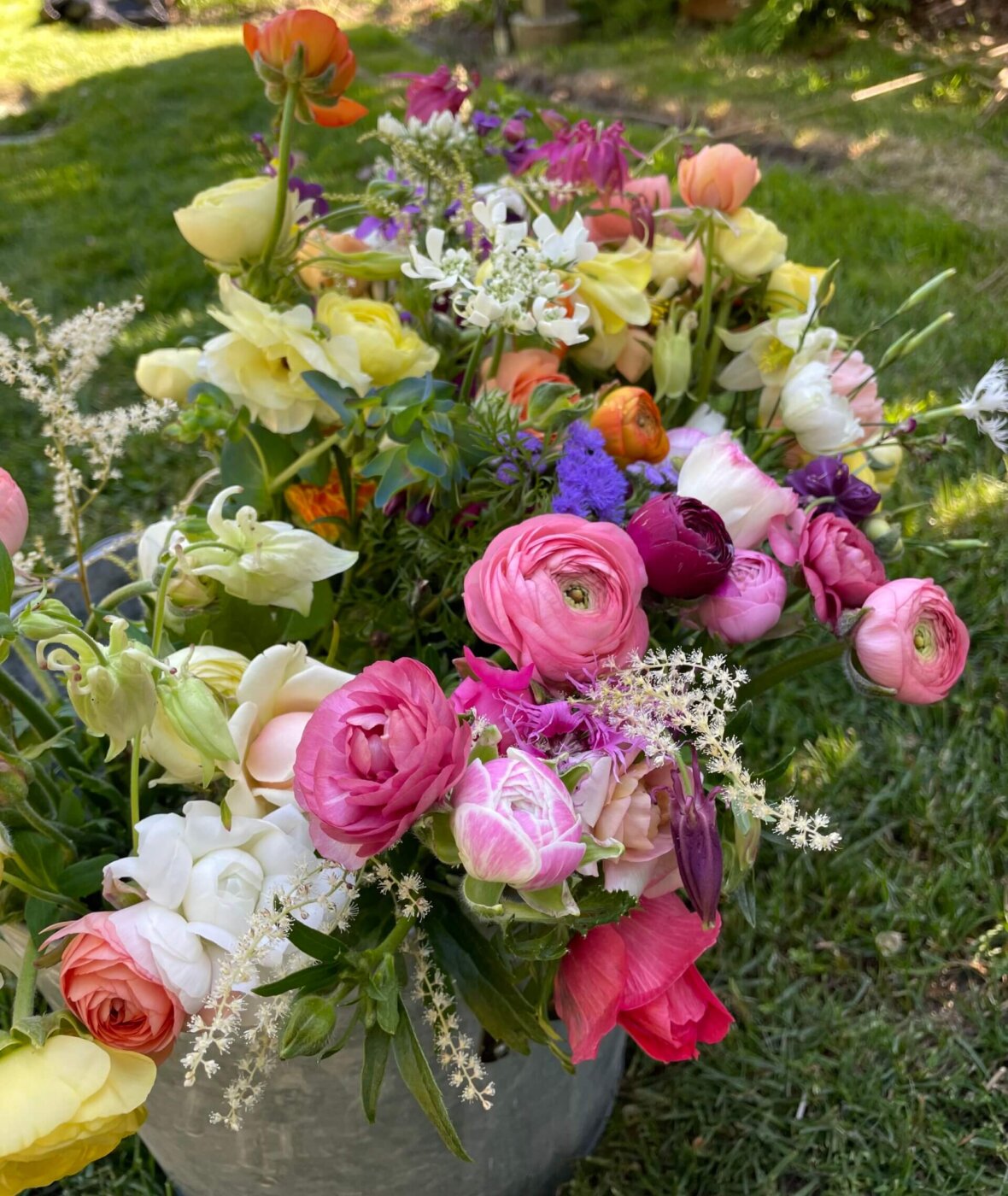
Bulb, corm, or tuber?
Finally, a quick word about a pet peeve of mine. Over here in North America, all the companies that sell ranunculus call them corms. Ranunculus are tubers, not corms. Anemone coronaria are also tubers, though they are always called corms here too. A quick summary, for those who are interested, of the different types of food storage organs. I’ve put it at the end so it’s easy to ignore if you prefer.
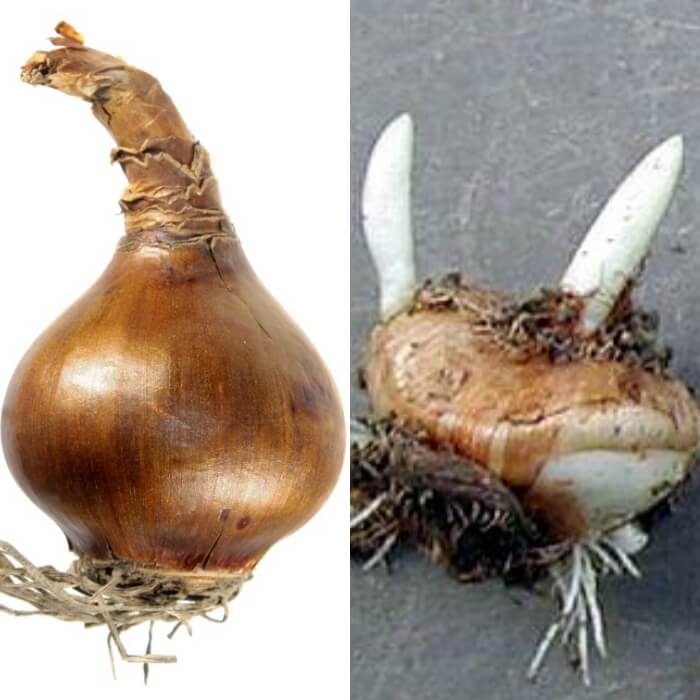
Bulbs (e.g. narcissus, lilies) are essentially short stems that have a growing point enclosed by thick and fleshy scales. In narcissus they are closely packed together; in lilies they are looser.If you cut open a bulb, you will see these layers. Roots grow from bottom, the foliage and flower buds come from the centre of the bulb and out of the top.
Corms (e.g. crocosmia, gladiolus, crocus) are the swollen base of a stem. They sometimes look like bulbs, but they lack the fleshy layered scales. If you cut open a corm you’ll see a solid structure. As with a bulb, with a corm roots grow from bottom, the foliage and flower buds come from the top. In the image of the crocus corm there are two buds/shoots at the apex.
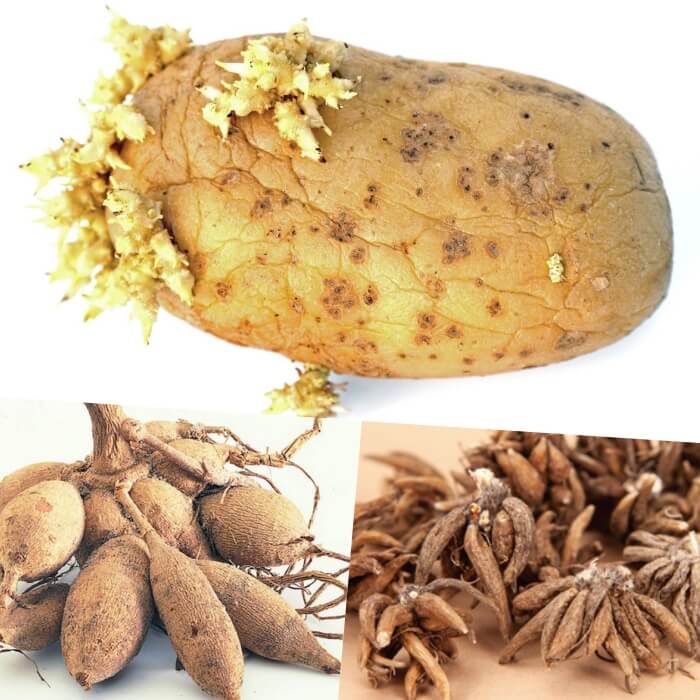
Tubers (e.g. Anemone coronaria, potato, tuberous begonia, cyclamen) are the swollen ends of an underground stem. They have eyes that are the equivalent of nodes on a stem. These can occur anywhere on the tuber’s surface and they shoot from these.
Tuberous roots (e.g. dahlia, left, ranunculus, right) are swollen roots rather than swollen stems, and so have no nodes or eyes (despite the fact we commonly call the bud that appears in dahlias an eye) and they send out ‘adventitious’ shoots, that is, shoots from non-stem tissue.
Receive updates via email of new articles.
Receive updates via email of new articles.
Latest Articles

Crazy about Cosmos
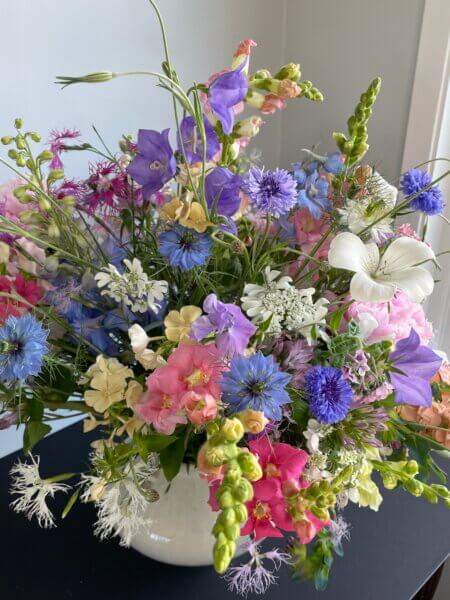
Flowers for summer bouquets I

Review of Rachel Siegfried’s The Cut Flower Sourcebook

Tulips

Victorian flower arranging

Easter lilies

Spring has sprung: here comes the daffodil

Pleasures of the nose: fragrant flowers in early spring

Violets for Valentine

Reflexing flowers
Subscribe to My Blog
Enter your email address to receive an email notification whenever a new article is posted.

4 comments
Jackie English
Hi Glennis, I love ranunculus and wish I could grow them here. Your photos are so pretty. Keep on posting, I love your blog!
Glennis Byron
Thanks, Jackie, that gives me a needed push to get on with the next one!
Elizabeth Fraser Jackson
Amazing flowers! Excellent presentation. Thank you.
Glennis Byron
Thanks, Elizabeth! Glad you liked it.